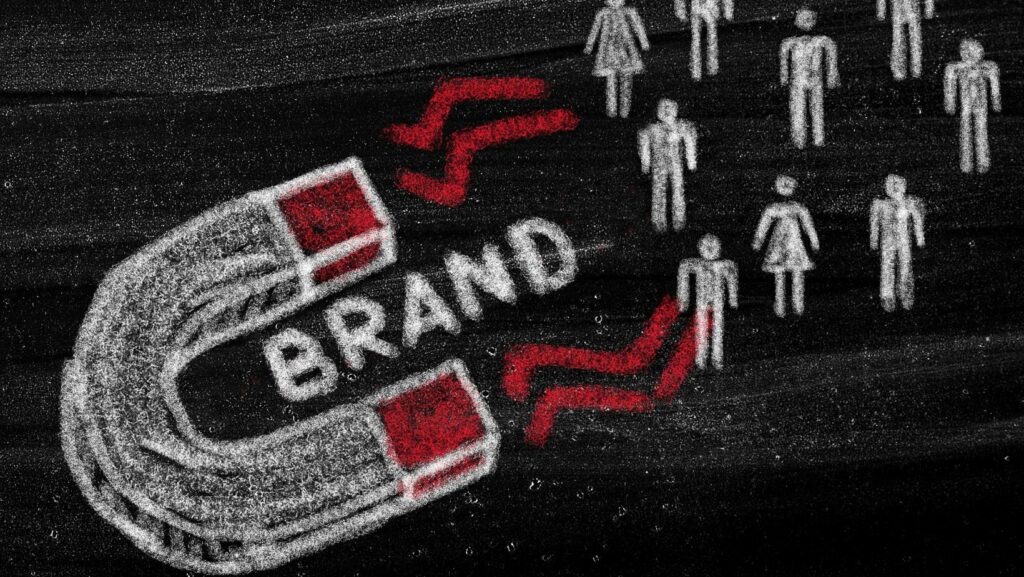In an increasingly crowded marketplace, brand symbols have become vital tools for businesses to stand out and create lasting impressions. These visual elements, whether it’s a logo, mascot, or color scheme, encapsulate a brand’s identity and values in a way that words often can’t. They serve as the face of the brand, making it instantly recognizable and memorable.
Brand symbols go beyond mere aesthetics; they evoke emotions and build connections with consumers. A well-designed symbol can convey trust, quality, and innovation, influencing purchasing decisions and fostering brand loyalty. In a world where first impressions matter, the power of a compelling brand symbol can’t be underestimated.
Brand Symbols
 Brand symbols serve as visual shorthand for a company’s identity, communicating core values quickly. They establish recognition, making it easier for consumers to remember and identify the brand among competitors. For instance, Apple’s logo signifies innovation and quality, creating strong brand recall.
Brand symbols serve as visual shorthand for a company’s identity, communicating core values quickly. They establish recognition, making it easier for consumers to remember and identify the brand among competitors. For instance, Apple’s logo signifies innovation and quality, creating strong brand recall.
These symbols elicit emotional responses, enhancing consumer connections. Nike’s swoosh, often associated with achievement and excellence, inspires motivation and loyalty. Consistent use of brand symbols strengthens brand coherence, building trust over time.
Effective brand symbols convey more than just visual appeal. They signal quality and reliability, impacting purchase decisions. A survey by the Design Council found that 60% of consumers are more likely to choose products from brands they recognize.
Types Of Brand Symbols
Brand symbols come in various forms, each serving unique purposes to enhance brand identity. The primary types include logos, mascots, and taglines. Taglines are short, memorable phrases that encapsulate a brand’s promise or mission. Nike’s “Just Do It” and Apple’s “Think Different” are notable examples. Taglines communicate core brand messages succinctly and reinforce brand identity. They are often used in advertising to trigger recall and emotional responses. A strong tagline can differentiate a brand in the marketplace and leave a lasting impression on consumers.
Case Studies Of Successful Brand Symbols
 Brand symbols have driven many companies to success by reinforcing their identities and values. Below are iconic examples of successful brand symbols. Apple’s apple logo, with its minimalist design and distinctive bite, exudes simplicity and sophistication. Introduced in 1977, the Apple logo has evolved but retained its core elements. This logo symbolizes knowledge and innovation, aligning with Apple’s brand philosophy. Apple’s consistent use of the logo across its products and marketing materials solidifies its brand identity. Nike’s swoosh, created in 1971, represents motion and speed. This simple, dynamic symbol conveys Nike’s commitment to athletic excellence. By consistently integrating the swoosh in advertising campaigns, product designs, and sponsorships, Nike has ensured its logo is instantly recognizable worldwide. The slogan “Just Do It” further enhances the brand’s identity, promoting empowerment and determination.
Brand symbols have driven many companies to success by reinforcing their identities and values. Below are iconic examples of successful brand symbols. Apple’s apple logo, with its minimalist design and distinctive bite, exudes simplicity and sophistication. Introduced in 1977, the Apple logo has evolved but retained its core elements. This logo symbolizes knowledge and innovation, aligning with Apple’s brand philosophy. Apple’s consistent use of the logo across its products and marketing materials solidifies its brand identity. Nike’s swoosh, created in 1971, represents motion and speed. This simple, dynamic symbol conveys Nike’s commitment to athletic excellence. By consistently integrating the swoosh in advertising campaigns, product designs, and sponsorships, Nike has ensured its logo is instantly recognizable worldwide. The slogan “Just Do It” further enhances the brand’s identity, promoting empowerment and determination.
Designing Your Own Brand Symbol
 Crafting a brand symbol involves careful planning and creativity. A compelling brand symbol can profoundly shape consumer perception and loyalty. Start with thorough research. Gather insights on industry trends, competitor symbols, and iconic logos. Evaluate symbols like Apple’s apple or Nike’s swoosh and understand their impact. Identify what makes these symbols successful. Look at both broad design principles and specific marketplace considerations. Note elements like color, shape, and simplicity that play roles in brand recognition.
Crafting a brand symbol involves careful planning and creativity. A compelling brand symbol can profoundly shape consumer perception and loyalty. Start with thorough research. Gather insights on industry trends, competitor symbols, and iconic logos. Evaluate symbols like Apple’s apple or Nike’s swoosh and understand their impact. Identify what makes these symbols successful. Look at both broad design principles and specific marketplace considerations. Note elements like color, shape, and simplicity that play roles in brand recognition.
Engage in an iterative design process. Begin with conceptual sketches, focusing on core ideas. Refine these concepts based on feedback and criteria like versatility and scalability. Create digital prototypes to visualize the symbol in different contexts. Use A/B testing to compare variations. Continually adapt the design based on data and insights, ensuring the final symbol aligns with brand identity and resonates with the target audience.
Final Thought
Brand symbols are powerful tools in defining and reinforcing a company’s identity. They go beyond mere visuals to create emotional connections and influence consumer behavior. By understanding the psychology behind these symbols and learning from successful examples, businesses can craft symbols that resonate deeply with their audience. Investing in a thoughtful design process ensures that the brand symbol not only stands out but also aligns perfectly with the brand’s core values and identity. Through strategic use of brand symbols, companies can achieve lasting recognition and loyalty in an ever-competitive market.

